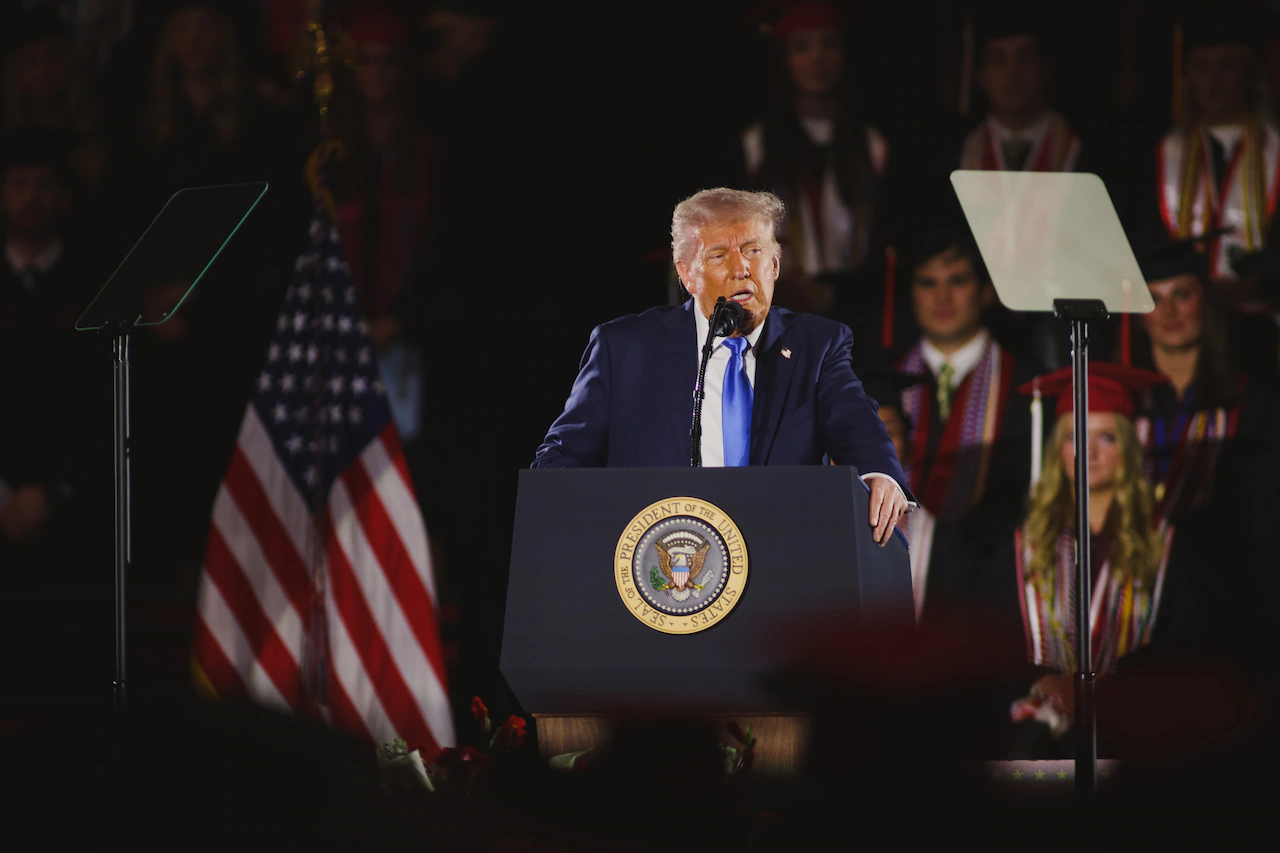
Casagrande: Does Donald Trump’s executive order save college sports?
How did your country report this? Share your view in the comments.
Diverging Reports Breakdown
Casagrande: Does Donald Trump’s executive order save college sports?
President Donald Trump signed an executive order under the title “SAVING COLLEGE SPORTS’ The EO states, “the policy of the executive branch” that third-party pay-for-play payments “are improper and should not be permitted by universities” The statements from collegiate athletics leaders from all levels stopped short of declaring victory. “We appreciate President Trump’s commitment to protecting the future of college athletics,” says the NCAA president Charlie Baker.“In our democracy, we still need Congress to pass a law before the president’S signature is truly meaningful here,’’ says John Avlon, a former college football coach and head of the NCAA Division I Football Oversight Committee. ‘This EO isn’t completely toothless, however,’ says Avlon. ‘It’ll be interesting to see how the NCAA responds to the EO.’ “This is not the end. This is the beginning.”
President Donald Trump on Thursday signed an executive order under the title “SAVING COLLEGE SPORTS.”
The White House then released a fact sheet on the EO under the headline “President Donald J. Trump Saves College Sports.”
Does it?
No.
Of course it doesn’t.
Simply not true. An exaggeration at best, but it’s at least continuing the conversation as collegiate sports leaders beg Washington for help solving the mess they’ve made.
In the age of hyperbole, this EO is another item on the growing stack as the search for the college athletics savior continues.
“This,” as Nick Saban once famously said, “is not the end. This is the beginning.”
Vague wording and the lack of any real enforcement mechanism softened the impact of some of the headline-making points. For example, the EO states, “the policy of the executive branch” that third-party pay-for-play payments “are improper and should not be permitted by universities.”
Such activity is already banned, except in legitimate, fair-market-value arrangements governed by the College Sports Commission, established after the recent House vs. NCAA court settlement. It’s still unclear if any of that would withstand imminent legal challenges and the EO doesn’t change that.
There’s still work to be done.
Don’t take it just from me. The statements from collegiate athletics leaders from all levels stopped short of declaring victory.
From NCAA president Charlie Baker’s statement (bolding is mine to emphasize the important part): “The Association appreciates the Trump Administration’s focus on the life-changing opportunities college sports provides millions of young people and we look forward to working with student-athletes, a bipartisan coalition in Congress and the Trump Administration to enhance college sports for years to come.”
He doesn’t sound saved.
Now, a sample from the joint statement issued by commissioners of the five power conferences.
“We appreciate President Trump’s commitment to protecting the future of college athletics,” it reads. “This executive order builds on the momentum created by the bipartisan SCORE Act, which will provide long-term stability to college sports and expand resources to support the overall well-being of student-athletes.”
In our democracy, we still need Congress to pass a law before the president’s signature is truly meaningful here.
Perhaps this EO is a shove to the House and Senate to get something done. They have failed at every previous attempt, not just to pass a bill, but for one to get a meaningful shot.
Senator/Coach/Gubernatorial Candidate Tommy Tuberville’s try went to the pine box.
The aforementioned SCORE Act is the latest attempt to pass national legislation that would supersede the patchwork of state NIL laws, which have contributed to the current state of affairs. It has more momentum than previous efforts, but still faces major hurdles gaining 60 Senate votes if it advances from the House.
This EO isn’t completely toothless, however.
Outside of the NIL components, a section attempting to preserve or expand opportunities for women’s and non-revenue sports could have some juice. It’s hard to oppose the sentiment, too.
The EO calls for schools with more than $125 million in athletics revenue to expand scholarship offerings beyond last year’s totals for women’s and non-revenue sports.
And those who made $50 million should provide at least the same number of scholarships and should not disproportionately cut scholarships/roster spots based on the revenue.
Of course, there’s no direct way of punishing schools that do not meet these benchmarks because an EO is not a law.
There is, however, a sneaky line that could provide some degree of enforcement. The EO calls for several cabinet secretaries, the attorney general, and the chair of the FTC to develop a plan to advance these policies through several mechanisms.
Among them: “Federal funding decisions.”
This administration hasn’t been shy about using federal research funding as a cudgel to force (or attempt to) universities to bend to their will.
Therefore, there may be more eyes from university administrations scrutinizing the workings of their athletics departments.
It’s also worth noting these funding denials have faced predictable court challenges on account of constitutional issues, so who knows, really.
Additionally, competition for the 2025-26 season will begin in a few weeks. So the clock is ticking if anyone isn’t currently compliant.
There are other points about clarifying whether athletes can be considered employees and “protecting the development of the United States Olympic Team.” There’s a request to shield the NCAA from future antitrust lawsuits, but that would likely require an act of Congress.
Mission accomplished? No.
College sports saved? Nope.
But we’re over here talking about this and not that so maybe the executive order wasn’t a total failure.
Michael Casagrande is a reporter for the Alabama Media Group. Follow him on Twitter @ByCasagrande or on Facebook.
